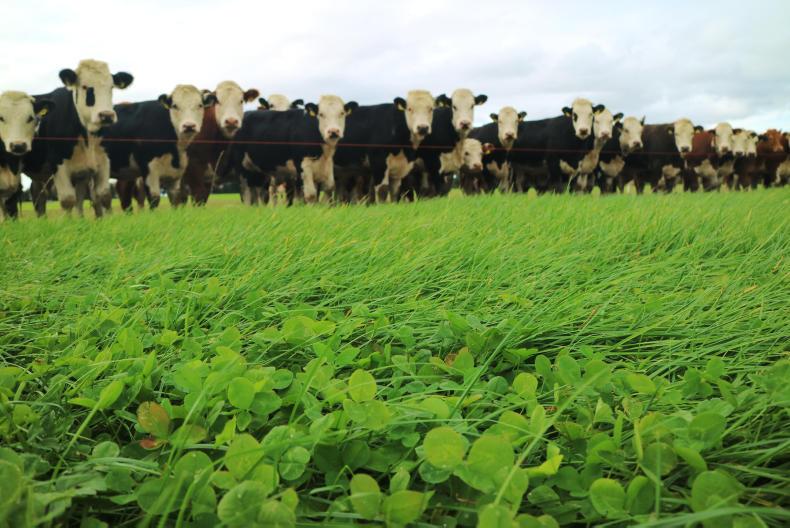In general, growth has been excellent for the last month and there is an abundance of grass on farms. This is encouraging as we face into autumn grazing.
Unfortunately, weather conditions have deteriorated significantly in the last two weeks with prolonged periods of heavy, thundery rain in a lot of areas. This is now taking its toll on ground conditions.
If grazing is not managed carefully in these wet conditions, poor grass utilisation and poaching can very quickly deplete a lot of the hard-earned grass covers on farm.
Management
The secret to managing grass in wet conditions is to keep stock settled. Unsettled cattle start to travel and this is when most of the damage is done – both to ground and to grass.
The best way to keep cattle settled is to keep them fed. But critically, they need to be fed daily, if not twice per day.
The idea of turning a group out on to an entire field or paddock and leaving them there for a set number of days is unlikely to work. After a day, any grass they walk on will get spoiled and won’t be grazed. They will walk on this rather than graze it – that’s going to lead to very poor utilisation.
Sections
Instead, that field or paddock should be grazed in sections, allowing one section per day. When setting up sections, try to make a wide, shallow feed face. Also try to avoid creating corners to graze into. Cattle should also have access to some form of shelter, like a hedge, on at least one side.
In a large field, start erecting a back-fence after the third section is allocated. This will protect the regrowths and limit ground damage.
If currently feeding concentrates at grass, look to see if it is possible to put the troughs on a roadway or ideally in a yard or shed, and let the cattle come in to them.

Health
Wet conditions and lush, leafy grass swards mean the risk of bloat and grass tetany is high.
In terms of grass tetany, lush and leafy wet grass, like after-grass for example, is very low in fibre and will rapidly pass through the digestive system. This allows little time for magnesium absorption into the bloodstream of the animal.
I would be strongly recommending going back out with hi-mag lick buckets this weekend.
Similarly with bloat, the biggest risk is grazing clover swards or very lush grass and clover swards, particularly when wet, because the feed is rapidly digestible.
At this time of the year, white clover may contribute over 40% of the DM (dry matter) in some swards. Gradually ease animals onto very lush swards and if anything does swell up, put them into the shed immediately on a diet of hay.






 This is a subscriber-only article
This is a subscriber-only article









SHARING OPTIONS: